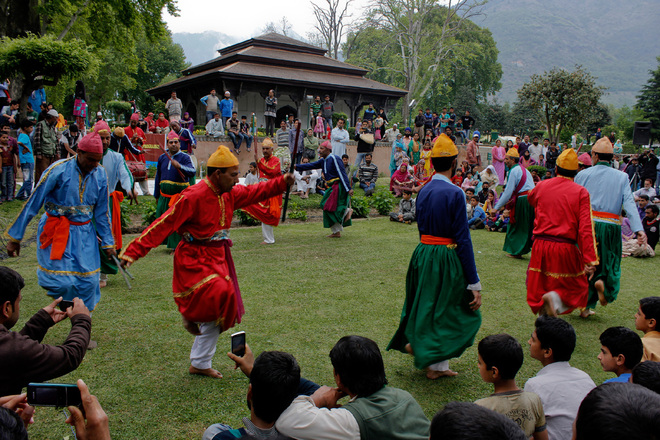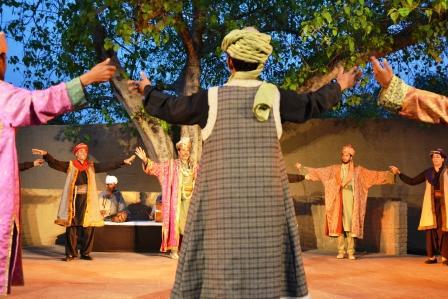Folk Theatre of India: Bhand Pather

Bhand Pather is the traditional theatre that is enacted in the Kashmir Valley. Historically Bhand Pather, represented the secular fabric of the valley with both the Muslims and the Pandits being a part of the performances. Post-1990, due to all the upheaval in the Kashmiri social structure Bhand Pather has had a significant impact for it stood as an emblem of peace, harmony and brotherhood. Since then there has been a tinge of decrease in the glory and the brilliance of the Bhand Pather.
The word ‘Bhand’ means the traditional and the age-old folklore entertainers from India, Nepal, Pakistan. Historians are of the opinion, that the Bhands entered the Kashmir Valley from Persia due to the onset of Muslim royal courts in India around the 14th Century. Bhand Pather is etymologically derived from two Sanskrit language words “Bhana”, which is a drama of satire and is sourced on the Natyashastra by Bharata, and “Pather” which means a character in a play.
The folk theatre is an amalgamation and a unique striking blend of singing, acting and storytelling. Farce is the centric component of this art form which is complemented by the satirical and the humorous Pathers or storylines.

The abode of Bhands in modern-day Kashmir is predominantly in Gondpora, Shaangus and Muhipora of the Anantnag district. They are also found in some other places like Kokernag, Frisal, Qayamooh.
Bhand Pather is considered as an ancestral endowment, a knowledge a skill that is passed down the generation as legacy and with the will to keep the theatre form alive. The Kashmiri societal fabric is the central theme of all the plays and is at the very core of these performances. The nature of the theatre asks the performance to be lively, energetic and high interactive. The play performances are designed such that they are best enjoyed in open spaces such as under the shades of lofty Chinars, open compounds, in weddings with the aim to invoke satire, humour and bring a reflection to the society. A conscious effort has been made to ensure that plays do not deal with tragic subjects.
The form had thrived and grown manifolds during the peaceful times in the valley. However, with the rise of anti-societal elements, the art form has given the theatre form a huge setback. Society must progress towards peace and let the lost theatre form regain its formal glory.
Independent Project by Abhinav Sharma
Guide ⇒ Prof. Manohar Khushalani
References :